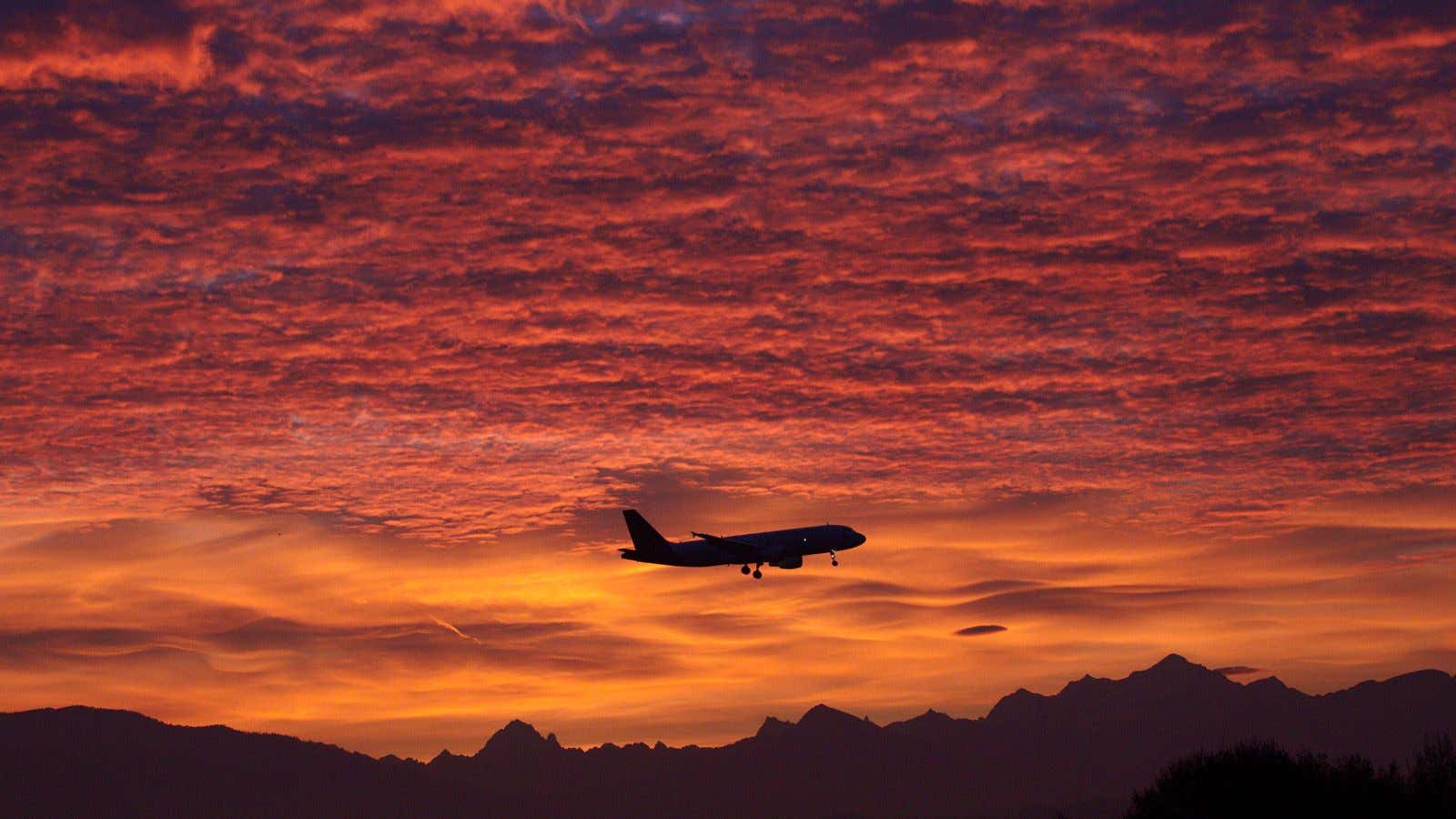If your long-haul flights are feeling even more endless than they used to, it may not be your imagination. As climate change alters wind patterns, it’s taking a little bit of extra time for commercial flights to cross the Pacific Ocean, a new study has found.
The study published in Nature Climate Change compared the duration of around 250,000 flights between Honolulu and three cities on the US West Coast (Los Angeles, San Francisco and Seattle) over a period of almost 20 years.
On average, they found, eastbound flights were “anomalously” faster (10 minutes shorter) and that westbound were “anomalously” slower (11 minutes)—balancing out to about an additional minute per round trip. They attributed this extra minute to changes in ocean temperatures and El Niño, the periodic climatic phenomenon.
The time difference was consistent across routes and the three carriers studied (United Airlines, Delta, and Hawaiian Airlines), so the scientists concluded that the extra minute is caused by climate variations rather than airline operations.
As the temperature of the Pacific rises and falls, the atmospheric waves move to higher latitudes of both the South and North hemispheres, where they change circulation patterns, speeding them up in some places and slowing them down in others, and affecting planes’ progress through those streams of air.
In a world where delayed flights can leave passengers stranded for hours, an extra minute might seem insignificant, but it actually has major implications, according to the research.
“If the total round–trip flying time changed by an average of one minute, the amount of time commercial jets would spend in the air would change by approximately 300,000 hours per year,” the study states. This would translate to approximately a billion gallons of jet fuel, costing about $3 billion, and 10 billion kilograms of CO2 emitted per year, according to Karnauskas. Or to put it into a broader context: this additional annual CO2 emission would be equivalent to 1.5% of that used by the global commercial airline industry and 0.03 percent of all the human emissions.
The researchers also predicted that flight times will continue to grow. “We analyzed over 30 global climate models to quantify how much the winds are projected to change in the future,” said to Quartz Kristopher Karnauskas, lead author of the study and a researcher at the Woods Hole Oceanographic Institution, a non-profit oceanographic research organization. “Once we knew this, we could convert to changes in flight times, fuel consumption, fuel cost, and CO2 emissions.”
There’s a slight chicken-and-egg quality to the predicament: Flights are longer because of climate change, creating more energy use and emissions that contribute to climate change.
Around the world, Karnauskas said that some flight times might get longer and some shorter, but in any case airlines would be “smart” to invest in fuel-efficient technologies.
